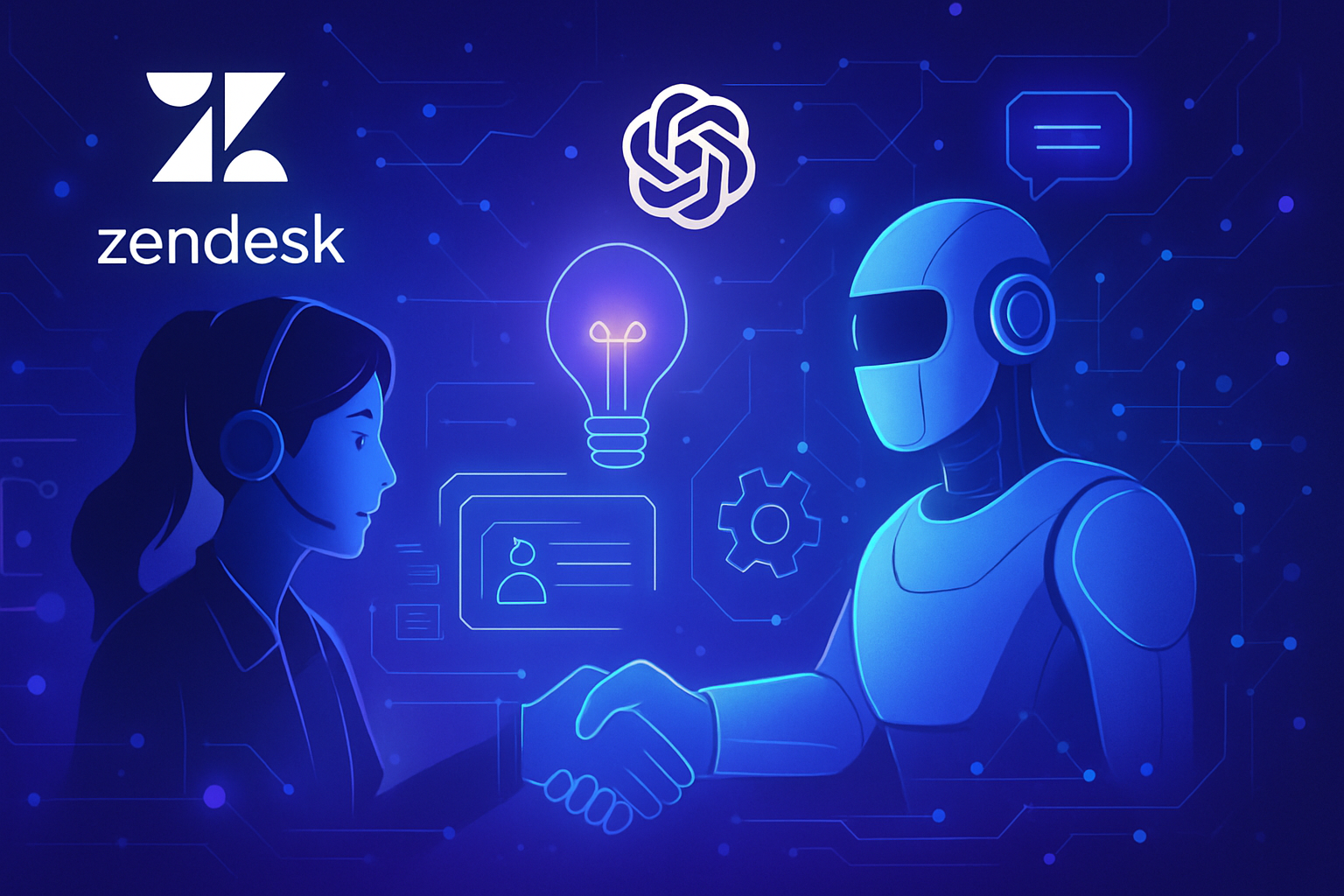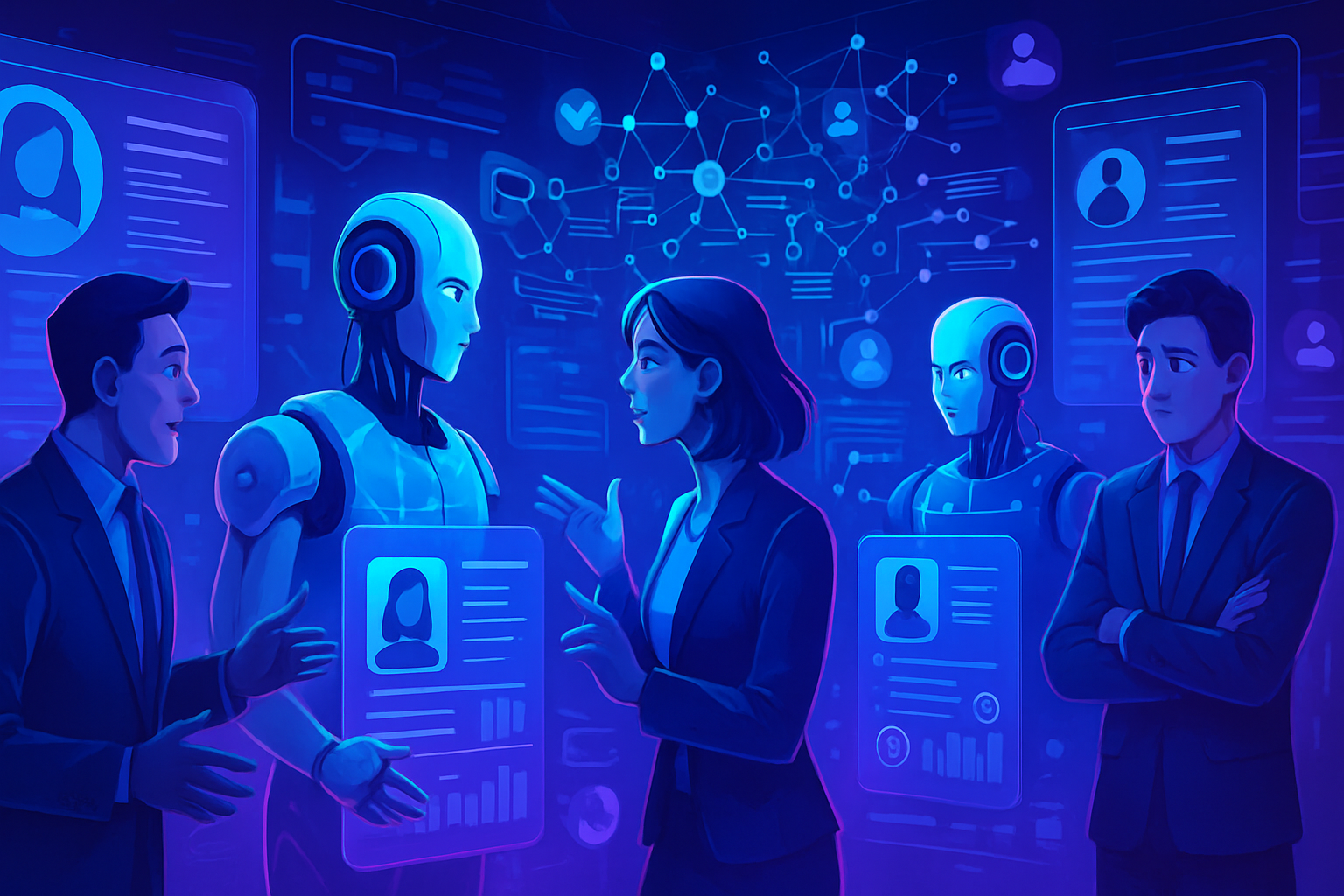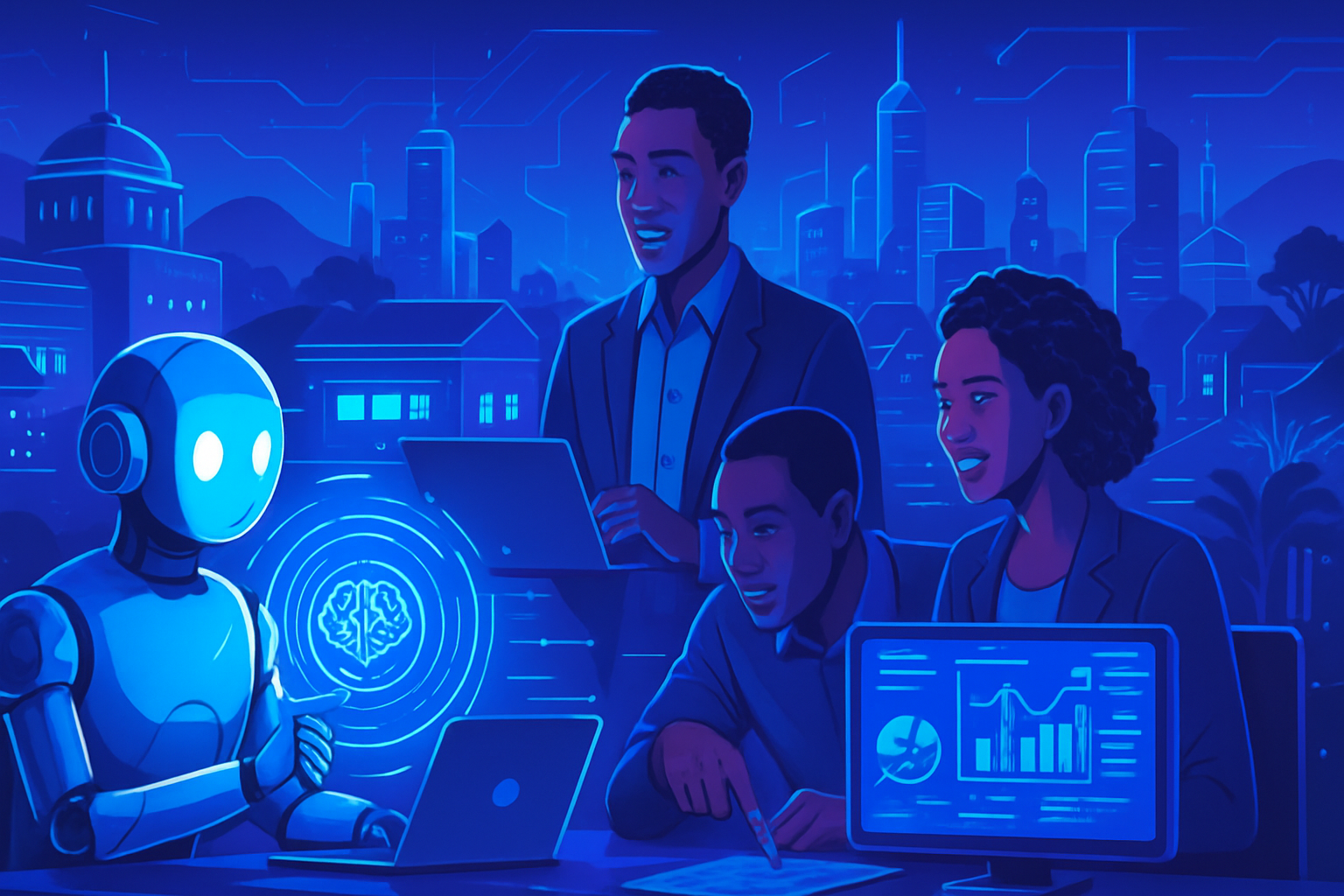Zendesk and OpenAI are redefining the customer experience. This innovative alliance aims to achieve 80% automated resolutions in customer interactions. The power of artificial intelligence transforms service processes into a seamless and efficient dynamic. The collaboration between these two entities highlights the strategic importance of generative AI and its impact on customer satisfaction. Targeting operational excellence while safeguarding data privacy becomes imperative. OpenAI’s models, tailored to the specific needs of businesses, promote instant and relevant communication.
Strategic Partnership with OpenAI
Zendesk, a major player in the customer experience field, has formed a strategic partnership with OpenAI. This collaboration aims to strengthen the company’s generative artificial intelligence and achieve an ambitious goal: 80% automated resolutions. Matthias Göhler, CTO EMEA of Zendesk, specifies that this partnership is not limited to the simple integration of models. An active synergy is being created, including feedback exchanges and a direct influence on research and development projects.
Technological Innovation and Performance
The presence of AI is already noticeable within Zendesk’s solutions, covering various aspects such as intelligent routing, intent analysis, and interaction management. OpenAI positions itself as a key partner, particularly for the written aspect, using advanced language models. This innovation allows clients to benefit from an improved user experience while maintaining a performance-based approach.
Supplier Evaluation and Flexibility
Zendesk regularly conducts benchmarks among several suppliers to ensure optimal results for its clients. The evaluation criteria include response speed, accuracy, and deployment-related costs. Although changing suppliers is a possibility, the strength of this partnership remains indisputable, particularly with AWS, which is a cornerstone of Zendesk’s services.
Latency Management and Traffic Spike Preparedness
Latency management is a critical issue, especially during peak activity periods. The design of the systems incorporates this parameter as a central criterion. The location of data centers also plays an important role in minimizing delays. Strategies are in place to anticipate traffic spikes, such as those related to Black Friday or significant sports events.
Accuracy and Continuous Improvement
Although OpenAI’s models may occasionally make mistakes, a clear improvement has been observed with the evolution of versions. ZenDesk specifically trains its models to handle customer service requests, based on a vast amount of interactions processed each year. This approach ensures a solid foundation for refining artificial intelligence while ensuring data anonymization.
Use of Artificial Intelligence in Interactions
Among the techniques applied, the approach called RAG (retrieval augmented generation) is particularly effective. This model allows for searching for answers in a reliable knowledge base, while maintaining the integrity of the information. For example, when a product return request is made, the AI checks the orders and,
if necessary, triggers the appropriate process without human intervention.
Automation of Resolutions and Client Impact
The ambitious goal of achieving 80% automated resolutions through AI translates into a significant improvement in customer satisfaction. This automation allows agents to focus on more complex cases, reserving their time for high-value interactions. Currently, many clients believe that up to 50% of their requests can already be handled by AI, demonstrating the growing efficiency of these solutions.
Evolution of Client Adoption
Reluctance towards artificial intelligence is quickly diminishing. The absence of discussions about AI in professional forums has become rare. Fewer companies express doubts, often driven by security concerns. The anticipation of 20,000 clients using Zendesk’s AI by the end of the year highlights a growing and positive adoption of the proposed solutions.
Growth Perspectives and Economy
AI is expected to generate nearly 200 million dollars in revenue for Zendesk this year. The company positions itself as one of the market leaders in customer service. This dynamism illustrates not only the growing interest in these technologies but also substantial growth potential in the sector.
Zendesk’s reputation as a key market player is further refined by this partnership with OpenAI, highlighted by technological advancements and customer satisfaction. For more information on the impact of AI on the market, also check out articles related to other innovative companies, such as those on the methods of Danone and AWS. To explore thoughts on the need for re-evaluation, visit this article on artificial intelligence or sectors to exploit with generative AI via this article. Finally, the publication on ServiceNow is also worth checking out for valuable insights.
Frequently Asked Questions
How does Zendesk use OpenAI to enhance the customer experience?
Zendesk leverages OpenAI’s language models to enhance its artificial intelligence solutions, particularly in content generation. This helps increase the rate of automated resolutions and improve the accuracy of responses to customers.
What are the main benefits of the alliance between Zendesk and OpenAI for users?
This collaboration aims for a resolution of 80% of inquiries through AI, meaning faster and more accurate responses for customers, while allowing agents to focus on more complex, high-value cases.
How are customer data protected with Zendesk’s use of OpenAI?
Zendesk ensures that customer data does not leave the European Union through European data centers, which is a major asset for protecting personal data in the context of OpenAI’s application.
What type of artificial intelligence model does Zendesk use in collaboration with OpenAI?
Zendesk uses several AI models, including agents, a co-pilot, and intention models that are continuously evaluated and adjusted based on effectiveness and customer demands.
How often are OpenAI models integrated by Zendesk updated?
Zendesk regularly updates its models based on the new versions offered by OpenAI, considering criteria of accuracy, latency, and effectiveness to ensure the best user experience.
What results does Zendesk observe in terms of automation thanks to OpenAI’s AI?
Zendesk aims to achieve 80% automated resolutions, and some clients have already reported restructuring rates of 40 to 50%. AI has significantly improved the speed and accuracy of responses.
How does Zendesk manage latency during traffic spikes?
Zendesk has designed its systems to minimize latency, notably by choosing strategic hosting locations and planning for peak activity periods, allowing for rapid scaling through AWS.
What solutions does Zendesk AI offer for specific product inquiries?
The AI employs a RAG (retrieval augmented generation) approach, which allows for consulting and corroborating answers through a reliable knowledge base, ensuring that the transmitted information is accurate.






